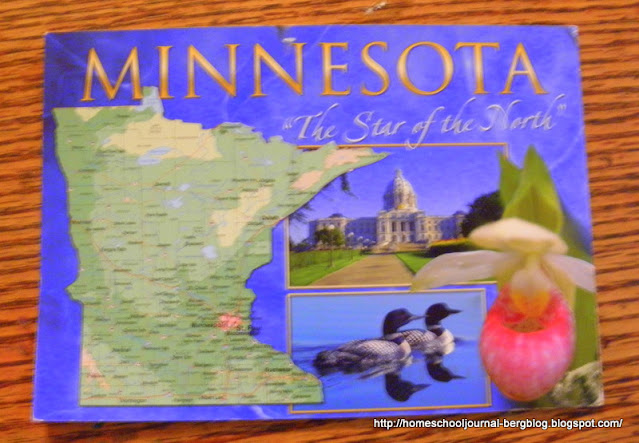Geography-Postcard Album: Minnesota, “Land of 10,000 Lakes”
This week's postcards come from Melissa and her family of Those Northern Skies and Living Childhood -Charlotte Mason inspired homeschool. Melissa is a fantastic photographer and talented homeschooling momma.
She writes,
"The first time I saw Minnesota, I did not like it. I grew up in western Kansas, a place of big skies and few trees. We were on our way home from my senior vacation (my siblings all got to plan a trip before our senior year.) I was tired and homesick. I felt like we were driving through a tunnel of shabby trees. I had no idea that one day I would live there and raise my children there."
"The Common Loon is the Minnesota state bird. Loons are beautiful and compelling. I remember the first time I heard a Loon call in the wild. I wrote a poem about it.Incidental is the title.I sat cocked backabsorbing foglegs swung over the armof an old chair.A loon laughedShadowsscurrieddownmyspine.Hedivedand hasn't come back upyet."
-Melissa
So, we listened to the sounds the Minnesota common loon makes.
When I asked her about foods that are representative of Minnesota, Melissa said,
"Lutefisk and Lefse....neither of which we've had!!! : )"
So our research led us to finding out more about these foods. According to Wikipedia,
Lutefisk is a traditional dish of the Nordic countries and parts of the Midwest United States. It is made from aged stockfish (air-dried whitefish) or dried/salted whitefish (klippfisk) and lye (lut). It is gelatinous in texture, and has an extremely strong, pungent odor. Its name literally means "lye fish."
 |
| photo from Simple as That Rebecca has a great recipe for Lefse. |
Lefse is a traditional soft, Norwegian flatbread made out of potato, milk or cream or sometimes lard and flour and cooked on a griddle.
Melissa also writes,
I forgot - Tim reminded me that we are also the home of General Mills.
We decided to not do a food for Minnesota, but between all these major food industries and the influence of the Swedish who settled there, one could easily find a suitable food to make to represent Minnesota.
Swedish Immigration
In Sweden there had always been a shortage of good land to farm. It was estimated that over 40 per cent of Swedish soil was unproductive. This situation was made worse by an increase in population. One of the main reasons for this was a fall in infant mortality from 21% in 1750 to 15% in 1850. The situation grew worse in the 1850s when Sweden suffered a succession of poor harvests. Unemployment grew and wages fell. This led to a increase in the numbers of people wishing to emigrate. Most of these were bankrupted farmers and out of work agricultural labourers. Only about a quarter of all Swedish emigrants came from towns and cities. The first Swedish colony (in America) was established by Gustav Unonius in New Upsala, Wisconsin in 1841. The following year Peter Cassel founded New Sweden in Jefferson County. Within a few years there were over 500 Swedish immigrants living in this settlement. -Swedish Immigration
About two miles north of Walnut Grove, Minnesota, you will find the site of the Ingalles' house on Plum Creek.
We have "visited" 22 states (44%) and Washington DC in our postcard-geography album.
Create your own visited map of The United States
If you would like to help us with this project and you live in one of the following states, please leave a comment: Mississippi, New Jersey, Vermont, Wyoming







